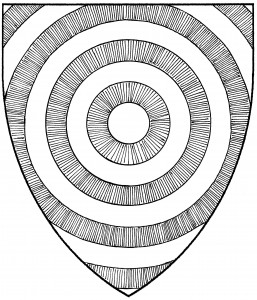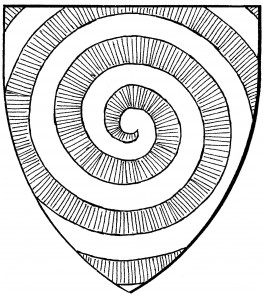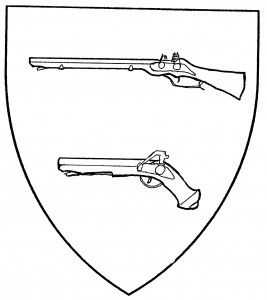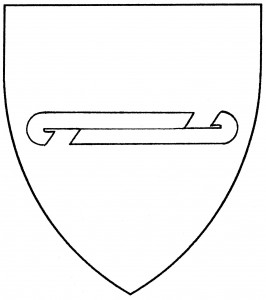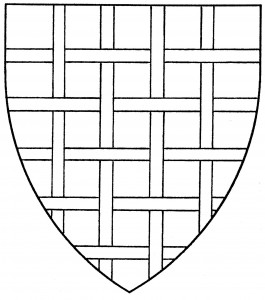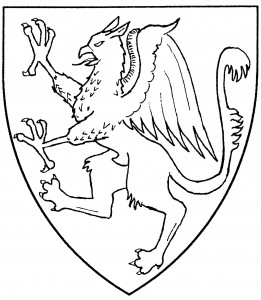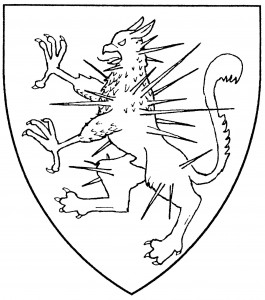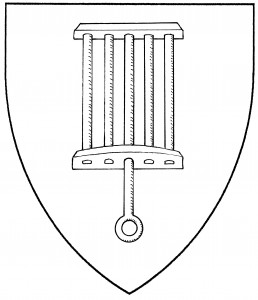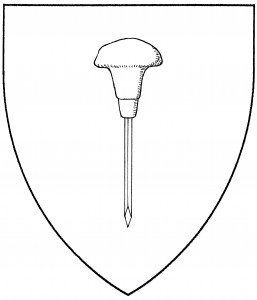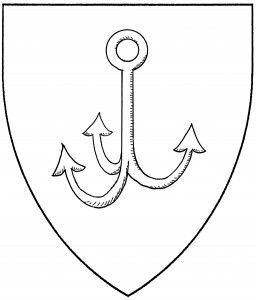A gurges is the heraldic representation of a whirlpool, by which name it is sometimes blazoned. It is found in the canting arms of Gorges, c.1255 [Asp2 152]. In its original form, the gurges was drawn as a series of concentric annulets, typically around four in number; with the outer rings often intersecting the edges of the shield. At the end of our period, possibly as a result of misdrawing, it began to be drawn as a spiraling line from the center to the edge of the shield; this is the form found in most modern heraldry texts. (The illustrations both show a dark gurges on a white field.) The forms are considered interchangeable, and both are permitted in Society armory.
Despite some early Society misblazons, the gurges is a charge. Barring period examples, surmounting a gurges with an overall charge is considered a step from period practice. For related charges, see schnecke.
Damian d’Outremer bears: Sable, a gurges Or.
Gregory of Glencairn bears: Vert, a cross engrailed argent, overall a gurges Or.
Geoffrey de Rennes bears as a badge: Or, a whirlpool rayonny vert.
